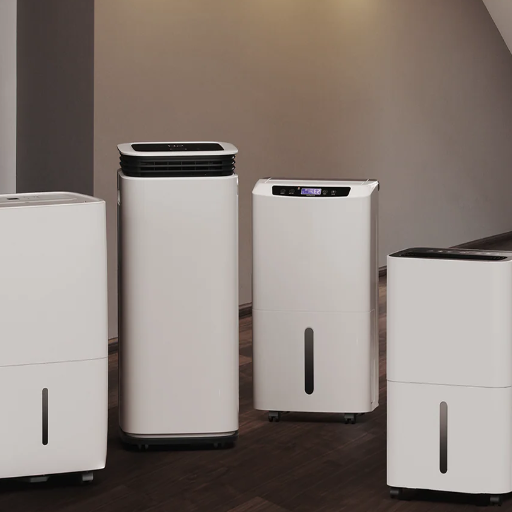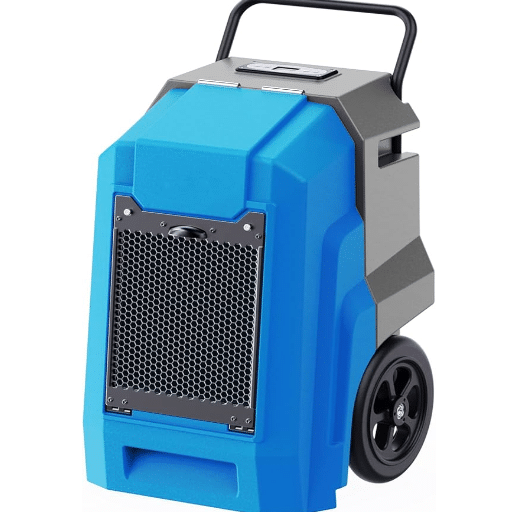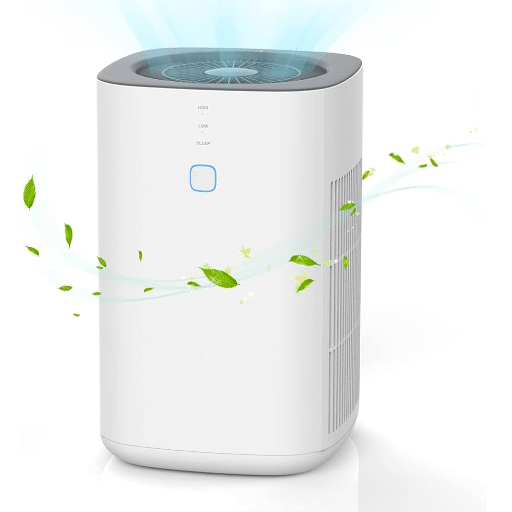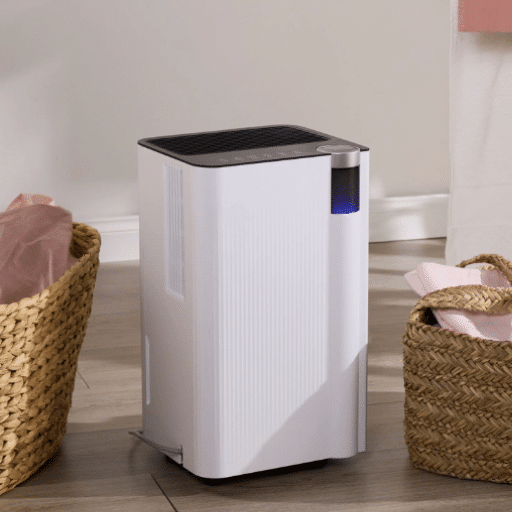When managing commercial spaces, maintaining optimal humidity levels is crucial not only for preserving the structural integrity of the building but also for ensuring the health and comfort of occupants. Excess humidity can lead to a host of challenges, including mold growth, property damage, and inefficient HVAC performance, which can significantly impact operations and expenses. This article dives into the key considerations for selecting the best commercial-grade dehumidifier tailored to your specific needs. Whether you are dealing with a warehouse, office building, or industrial facility, understanding the features, capacities, and technologies available will help you make an informed decision that guarantees long-term efficiency and reliability.
What is a Commercial Grade Dehumidifier?
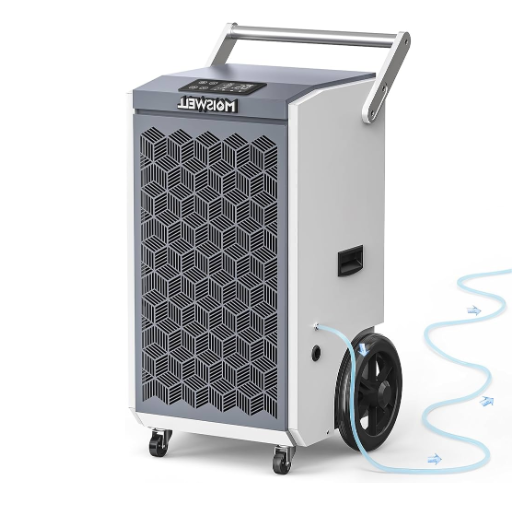
Understanding Dehumidifier Types
Commercial-grade dehumidifiers are broadly categorized depending on their method of moisture removal into refrigerant, desiccant, and hybrid dehumidifiers. Each type has specific strengths and weaknesses under different environmental conditions:
- Refrigerant Dehumidifiers: This type employs cooling coils to condense moisture from the air; therefore, they are most effective in warm and humid settings. Places like warehouses and office buildings, where moderate humidity levels need to be controlled, benefit from their use. Refrigerant dehumidifiers, due to their energy efficiency and ability to process large volumes of air, are a common choice for general commercial applications.
- Desiccant Dehumidifiers: These systems work in low temperature and extremely dry environments since hygroscopic materials are used as moisture absorbers. They are particularly suited for precision control of humidity in industrial facilities, cold storage, or processes that require low humidity levels. Desiccant models tend to perform well below 50°F, where refrigerant options may struggle.
- Hybrid Dehumidifiers: These models combine the principles of refrigerant and desiccant technologies. This makes them suitable in environments where conditions keep changing. Hybrid dehumidifiers are designed to perform optimally throughout a wider range of temperature and humidity levels, increasing their reliability in multi-purpose facilities.
In commercial settings, understanding the key differences between these types of dehumidifiers is crucial if optimal performance, equipment protection, and eco-commercial standards are to be maintained.
Key Features of Commercial Dehumidifiers
Commercial-grade dehumidifiers are designed for the efficient removal of high levels of moisture. One of their distinguishing characteristics is their powerful moisture extraction capability, which generally ranges from 50 pints to over 200 pints per day, depending on the model. Because of the high output, they fit well in larger areas like warehouses, industrial plants, and commercial buildings. Furthermore, many models have energy-saving features that enable their use for extended periods without a considerable increase in total energy consumption.
One other equally important feature is the incorporation of advanced control systems for the granular management of humidity. Commercial dehumidifiers usually come with adjustable humidistats, digital displays, and programmable timers, which enable users to set the environment to their needs. Some units go a step further with remote monitoring, enabling real-time adjustments and performance monitoring in sensitive areas.
Durability and mobility are important factors in commercial use. These dehumidifiers are usually constructed with heavy-duty materials to endure industrial conditions. Most include casters, handles, and a compact shape to aid in ease of movement and placement. In conjunction with low temperature operation, such as automatic defrost systems, these units are dependable in difficult situations, maintaining consistent performance in diverse environments.
How Industrial Dehumidifiers Differ from Residential Models
Compared to dehumidifiers designed for residences, industrial dehumidifiers function at a superior level due to the greater demands placed on them. First of all, they are constructed with high moisture removal capabilities, which allow them to extract enormous amounts of water in minimal time. For this reason, they are most suited for warehouses, construction sites, and manufacturing plants, as these surroundings tend to have high humidity levels that need to be managed quickly and precisely. On the contrary, residential dehumidifiers are intended for controlled small spaces such as living rooms, bedrooms, and basements, and tend to have lower moisture extraction rates.
Another primary difference deals with durability and construction of the units. “Rugged use and harsh conditions” would describe the type of setting industrial models are used in, and so they are designed accordingly. Heavy-duty casings with water, dust, and impact-resistant parts are incorporated along with most of the other features. Moreover, many industrial dehumidifiers come equipped with the ability to function in low temperatures due to systems such as thermal overload protection or automatic defrost. On the other hand, residential dehumidifiers focus on quiet operation and aesthetics, which is why compact designs made from lightweight materials are appropriate for home environments.
Operational flexibility illustrates the differences between industrial units. Maintainable options such as continuous drainage, Custom setting integration of pumps, large-scale custom applications, and many more features are often included in sophisticated models. Residential models place greater emphasis on humidity adjustability, control simplicity, and user friendliness. Such differences ensure that industrial dehumidifiers operate reliably under severe conditions while residential units provide ease and comfort in less demanding setups.
How Does a Commercial Dehumidifier with a Pump Work?
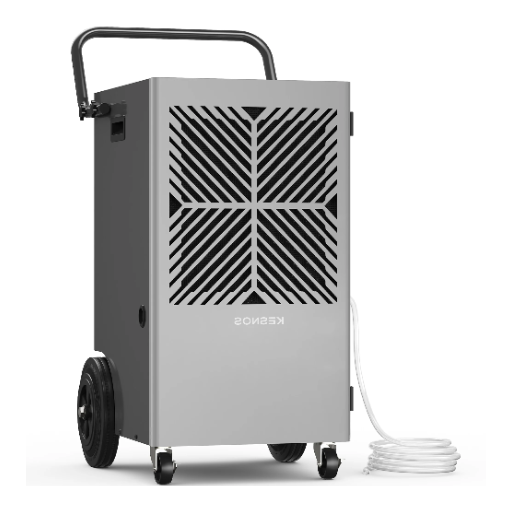
The Role of a Pump in Dehumidification
Within a commercial dehumidifier, a pump serves vital functions related to the effective extraction of moisture and the maintenance of humidity levels. Unlike standard dehumidifiers, hybrid models equipped with pumps do transport rather than drain water via gravity to a designated drainage point. Pumps function to increase operational flexibility and improve the efficiency of the dehumidification process. Here are five specific functions of a pump in the process of dehumidification:
- Promoting Nonstop Drainage Removal
With the inclusion of a pump, a designated level of water can be maintained in a tank, which allows continuous operation. A pump will not require constant emptying vs. filling, thus allowing uninterrupted performance.
- Promoting Multitasking Functions
Dehumidifiers can be mounted where there is limited access to a floor drain. A pump malfunction or deformation enables the furtherance of water uphill through long hoses, enabling height advantage sinks or even upper-level drains.
- Improving productivity in moisture-rich environments
A pump ensures that even in demanding industrial or commercial settings with high humidity, moisture removal occurs at an accelerated and consistent rate. This has specialized significance in water damage restoration and large-scale operations.
- Facilitating expansive operations
Pumps can handle significant volumes of water, which enables commercial dehumidifiers to function optimally in areas with heavy moisture loads. This is particularly important for warehouses, construction sites, manufacturing facilities, and other such sectors.
- Lowering Maintenance Requirements
The pump mitigates the manual supervision and labor needed by automating the drainage process, reducing the frequency of tank emptying. This, along with other features, leads to lower operational and maintenance costs.
User convenience and broad industrial applicability are ensured, along with enhanced efficiency, by incorporating a pump into commercial dehumidifiers.
Benefits of a Dehumidifier with Pump and Drain Hose
- Removing Water Continuously
Water can be removed continuously and automatically using dehumidifiers with pumps and drain hoses. Automatic processes are beneficial in high-humidity areas with little tank emptying, as constant operations are maintained.
- Better Functionality in High Humidity Areas
The built-in pump aids in removing water from great heights, enabling the functioning of the dehumidifiers in basements, crawl spaces, or other lower areas where gravity drainage isn’t possible. This helps in properly managing humidity in various places.
- Requires Less Maintenance and Time
The automated drainage systems aid in reducing user-checked tank emptying, which helps in reducing the time a device is not operational. Greater reliability for overall operation and lower maintenance greatly benefits the users.
- Good for Different Purposes
Dehumidifiers with pumps and drain hoses are useful for industrial and residential purposes. Moisture control in primary living areas, warehouses, or even construction sites can aid in preventing mold growth, maintaining breath quality, and improving structural integrity.
- Optimized Energy Consumption
Recent models of pump dehumidifiers are designed to minimize energy consumption during continuous operation. Furthermore, many models provide additional energy efficiency through timer settings and humidity-responsive adjustments.
The addition of the pump and drain hoses to dehumidifiers marks a distinct shift in the technology used for controlling moisture, improving the flexibility and economic value of the equipment for residential and commercial users.
Using a Drain Hose for Basements and Crawlspaces
A drain hose serves an important function in moderating high humidity levels within basements and crawlspaces that are susceptible to moisture build-up, mold due to condensation, and other concerns. Through the usage of a hose that connects to the dehumidifier, users have the option of continuous drainage, where the manual effort of emptying the water reservoirs is done away with. The pump ensures that deactivated water is removed completely and sent to a suitable drain or outflow while safeguarding the effective functioning and preventing overflow of the dehumidifier.
Modern systems of dehumidifiers tend to incorporate heuristic features like gravity-fed designs or even internal pump systems for better adaptability to newer, low-lying areas. For instance, gravity-fed relies on downward sloped drainage where the dehumidifier is placed above the outlet for easy access. In contrast, units that have inbuilt pumps are more active in pushing water through the hose. This is useful in cases where gravity-fed alignment is placed towards an elevated outlet or to remove the water from a longer distance.
Considering the use of a drain hose within these contexts, attention to strategic connections and material durability is paramount. With the standard garden hose or custom tubing adapters, commercial-grade dehumidifiers integrate garden hose fittings, enabling complete and trailer leak-free performance. Active upkeep, such as checking clogging or kinking, enhances operational efficiency, even in encrusted, moist conditions pertaining to moisture-laden basements or crawl spaces.
As may be seen, utilizing hose drain systems not only improves water management but increases the inherent advancement of the dehumidifier, making them very valuable in dealing with tough moisture surges in disregarded spaces.
What to Consider When Buying a 70 Pint Commercial Dehumidifier?
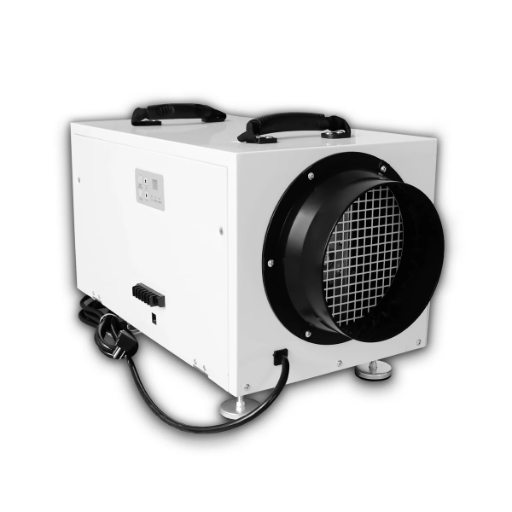
Assessing Space and Humidity Levels
When choosing a 70 pint commercial dehumidifier, it is important to consider the space dimensions and humidity levels for effective operation. Start with estimating the square footage or volume of the space. Commercial-grade dehumidifiers are meant for larger, high-moisture areas like warehouses, production facilities, basements, and other places with considerable moisture coupled with larger surface areas.
This number, relative humidity (RH), is crucial since it indicates the percentage of moisture content present in the air as compared to the maximum at that temperature level. Relative humidity exceeding perform outside its specified range could cause damage due to added moisture. Adequate dehumidifying capacity and airflow, typically specified in CFM, will be required for excess humidity levels surpassing 60% RH.
Considering detailed diagrams of rooms combined with specific climate data guarantees the selection of a dehumidifier that will operate effectively and dependably under appropriate environmental conditions. Remember to calibrate hygrometers that monitor RH and consider external factors such as seasonal moisture trails, poor room ventilation, and other humidity-enhancing conditions.
Choosing Between Portable and Industrial Options
Every application has its unique features, which make choosing between portable and industrial options quite tricky. As the name suggests, portable models are compact and lightweight, so they are easy to relocate, making them perfect for residential or temporary setups. Moreover, the units typically consume less energy, making them cost-effective for users who prioritize flexibility and mobility. On the flip side, their effectiveness may be limited for large-scale operations or prolonged use.
Unlike their portable counterparts, industrial alternatives are engineered for high-performance tasks and extensive coverage. These systems are made with hard-wearing materials for continuous operation in demanding conditions like manufacturing facilities, warehouses, or large commercial spaces. They often feature advanced functionalities such as higher dehumidification rates and IoT compatibility for real-time monitoring and automation. Although the upfront costs and installation processes may be more intensive compared to portable systems, their scalability and durability ensure long-term efficiency and reliability.
A thorough evaluation of the spatial dimensions, how often an area is used, energy consumption, and the budget is all needed in determining the best solution. Users receive optimal decisions by analyzing these, balanced with their functions and operational needs.
Why Use a Dehumidifier with a Drain Hose in Basements?
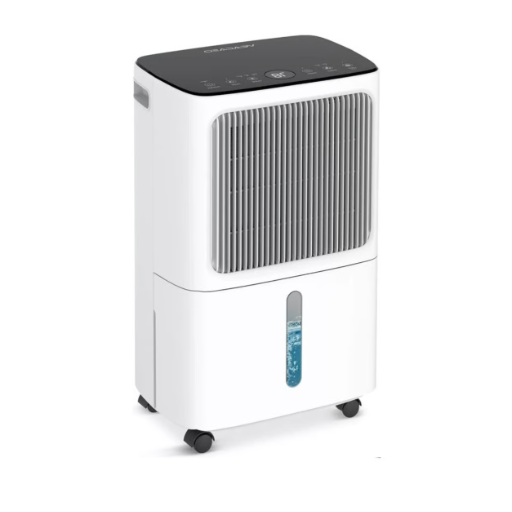
Controlling Moisture and Mold Growth
Basements are particularly vulnerable to a build-up of moisture because they are below ground level and have little ventilation. This accumulation of humidity can result in structural damage, the growth of mold and mildew, as well as musty odors. Dehumidifiers with drain hoses remove moisture continuously, which improves efficiency. These air conditioners lower indoor humidity levels, as per EPA recommendations, below 30% and above 50%. Such dehumidifiers will enhance the quality of the environment while preventing damage to stored materials, furniture, and the home’s structure.
With dehumidifiers, the need to empty water tanks is eliminated with the inclusion of a drain hose that allows for non-stop drainage. This is beneficial for areas like basements with higher moisture levels, as they lead to faster water tank fill-ups. Automatic drainage models allow downtime to be eliminated while guaranteeing smart use of water resources. Furthermore, modern advanced dehumidifiers include technology such as humidity sensors and customizable drainage, enabling operations to be adjusted according to the moisture level.
Alleviating high moisture content not only prevents mold growth but also alleviates many health concerns, including breathing difficulties and allergies. Mold loves moist environments, and continual contact with mold spores can worsen diseases like asthma, bronchitis, and other respiratory issues. A well-designed dehumidifier with a drain hose is an example of technology that enhances moisture control, helping to maintain both the basement’s structural strength and the health of the people living in it. Such technologies guarantee moisture control in an effective, energy-saving manner for years.
Efficient Moisture Removal in Indoor Environments
A combination of modern technologies and proactive techniques customized for the specific space is optimal for the control of moisture within indoor settings. The integration of modern automated systems, for example, hygrometers, smart dehumidifiers, and others, is key for humidity regulation as they monitor the indoor humidity level and control it accurately in real time. The devices help improve energy efficiency alongside consistent performance, thus reducing the chances of mold and other forms of structural damage.
Microbial growth alongside degradation in the quality of air can be avoided by maintaining relative humidity within the 30 to 50 percent range. Furnishing advanced filtration systems in combination with dehumidifiers improves the process by eliminating airborne particulates and allergens, thus creating healthier surroundings. Also, further ventilation improvements, such as the installation of energy recovery ventilation (ERV) systems, enable tempered air exchange without disruption to the humidity and temperature equilibrium of the building.
For areas such as basements, crawlspaces, and other poorly ventilated spaces, preventing external sources of moisture intrusion can be achieved through the use of vapor barriers in conjunction with dehumidification. These barriers are commonly made out of polyethylene sheeting and are effective in preventing moisture ingress from the ground or walls. Additional efficiency can be achieved through the integration of smart home technology, which allows homeowners to monitor humidity levels and control systems remotely, providing automated regulation and problem detection. This approach is a notable advancement toward balanced sustainability and comfort in indoor spaces.
Continuous Drainage for Convenient Operation
Continuous systems provide an effortless way of dealing with excess water in building interiors by directly diverting it into a drainage system. This approach frees one from the frequent manual emptying of water collection vessels, which is a drawback in traditional dehumidification systems. Newer models contain built-in pumps or idle tank systems that allow for continued use in highly humid regions.
Continuous drainage can sustain extraction rates of 50-70 pints per day, contingent upon the dehumidification unit’s capacity and efficiency. This is especially important for areas with constant humidity levels above sixty percent since continuous exposure to such levels fosters the development of molds and may cause damage to the structure. In addition, modern units with continuous drainage tend to incorporate active flow control smart sensors that dynamically adjust control volume, reducing energy consumption while preserving performance.
For continuous drainage to operate without difficulties, combining them with advanced filtration systems and real-time monitoring software provides an all-in-one package. This system provides ease of use while providing accurate control over environmental conditions, making it an essential tool for sophisticated climate control systems for homes, offices, and manufacturing plants.
How to Maintain Your Commercial and Industrial Dehumidifiers?
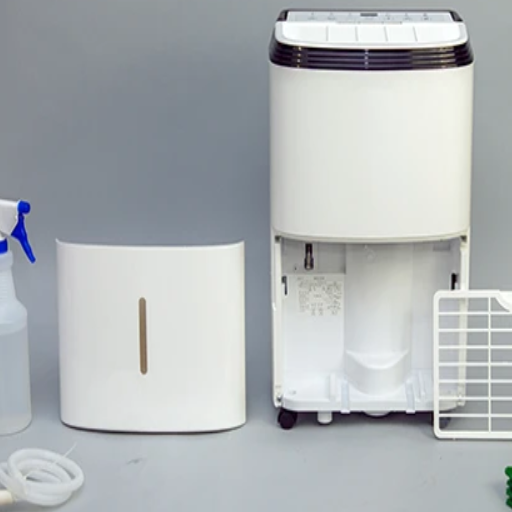
Regular Maintenance and Cleaning Tips
Proper commercial and industrial dehumidifier maintenance is critical in ensuring maximum performance, prolonging the life of the equipment, and meeting the appropriate benchmarks for environmental impact. The steps below assist with routine maintenance issues:
- Regular Check-Up and Cleaning of the Air Filters: Air filters collect unwanted grime, dirt, and other particulate matter, which leads to decreased performance and airflow restriction. Depending on the intensity of the use and the surrounding environment, filters should be cleaned or replaced every 1 – 3 months.
- Condenser Coils Monitoring and Cleaning: Dirty conditioner coils can create a bottleneck in the heat exchange cycles, leading to increased electrical expenditure and work pressure on the dehumidifier. Coils should be visually inspected at least once every three months and cleaned with a soft bristle brush or a non-corrosive cleaning solution safe for exposed surfaces, free of built-up material.
- Assessment of the drainage system: Check that the drainage pipes and reservoirs are not blocked, which could cause leaks or improper functioning. Check detachable evaporator drain pans, as well as permanently mounted basins for continuous flow or pump appliances that may cause system suspension.
- Adjusting the Calibration of Humidity Sensors: Relative humidity is critical for a system’s proper operation, and humidity sensors are essential in maintaining the desired levels. Testing due to factors like age is required with a periodic recalibration using a hygrometer as per instructions given by the manufacturer.
- Evaluating Electrical Parts and Their Connectors: Potential risks like low system effectiveness can come from loose or damaged wires, which result in insufficient power. Monthly evaluation of every electrical relay, connection, and circuit board should be performed to identify if there is any form of disfiguration or damage.
- Dust the Air Vents and Exteriors and Clean Them: Cumulative dust can be very harmful to aesthetics, and wall-mounted Controls can be negatively impacted if a proper vacuum coupled with surge cleaning devices is employed on the vents.
- Schedule Annual Servicing with Professionals: A professional look at underlying issues that are difficult to spot is advisable annually for systems operating at peak efficiency. HVAC specialists are qualified to offer deep cleaning, diagnose associated system issues, and replace necessary parts.
Following these procedures will help you manage the operational costs and downtimes of your dehumidifier while ensuring that it works reliably. An organized record of inspections and actions taken will aid in the upkeep schedule and will provide more exact details of when certain actions need to be taken.
Enhancing Performance and Longevity
The lifespan and efficacy of a dehumidifying device can be achieved by implementing several advanced techniques, as well as strategies. The primary step towards achieving this goal is the application of smart technology. Integrating humidity sensors and programmable settings can help with precision control over moisture levels, and the consumption of energy will be less as well.
Modern designs based on compressors also constitute smart technology. The program settings strive to achieve a high humidity ratio, which lowers the power required over time. Airflow monitoring can also provide opportunities that, if addressed by removing unit intake or exhaust obstructions, can decrease unnecessary strain on electric motors and fan components. Filter and coil cleaning regularly has shown down the monitored unit efficiency by thirty percent, which in turn enables greater reliability of the systems.
Through IoT devices and AI-powered systems, fall within the proven predictive maintenance approaches, help in recognizing failure points for dehumidifying spaces, refrigerant leaks, and wear on internal components, to mention but a few. Having these adjustments ensures being cost-friendly, having sought proof for equipment durability, and enhances operational efficiency.
References
-
Field Test of Combined Desiccant-Evaporator Cycle Providing Lower Dew Points and Enhanced Dehumidification – Explores humidity control in hot and humid climates.
-
Thermal design of Humidification Dehumidification systems for affordable and small-scale desalination – Focuses on humidification-dehumidification technology and its applications.
-
Assessing Consumer Values and the Supply-Chain Market for the Integrated Water Heater/Dehumidifier – Analyzes market and consumer values for dehumidification technologies.
Frequently Asked Questions (FAQ)
Q: What factors should I consider when choosing a commercial-grade dehumidifier for a crawl space?
A: When choosing a dehumidifier for a crawl space, consider factors such as size, capacity, energy efficiency, and features like auto shut-off. Ensure the unit is robust enough to handle the crawlspace environment and has options for humidity control.
Q: Can commercial dehumidifiers reduce energy consumption?
A: Yes, many commercial dehumidifiers are Energy Star rated, meaning they are designed to be energy efficient and help reduce overall energy consumption while effectively controlling excess moisture.
Q: How do dehumidifiers help in preventing damage to your building?
A: Dehumidifiers reduce excess moisture, preventing damp conditions that can lead to mold, mildew, and structural damage, thus avoiding costly repairs and keeping the building comfortable and safe.
Q: Is a 60 pint dehumidifier suitable for use in smaller spaces?
A: A 60 pint dehumidifier can be used in smaller spaces, but it may be more powerful than necessary. It’s important to match the dehumidifier capacity with the specific needs of the space for efficient humidity control.
Q: What features should I look for in a commercial dehumidifier for optimal performance?
A: Look for features such as Energy Star certification, auto shut-off, flexible humidity control settings, and optional accessories for easy maintenance and repair. These features ensure efficient performance and long-term reliability.
Q: How often should I perform maintenance on my commercial-grade dehumidifier?
A: Regular maintenance is essential for optimal performance. Check the manufacturer’s guidelines, but generally inspect and clean filters monthly, and schedule professional maintenance annually to avoid costly repairs and extend the life of the unit.
Q: What is the ideal humidity level to maintain with a commercial dehumidifier?
A: The ideal humidity level to maintain is typically between 30% and 50%. This range ensures comfort and prevents excess moisture that could damage your building or inventory.
Q: How can I ensure that my dehumidifier is functioning at max efficiency?
A: To ensure maximum efficiency, regularly clean the filters, check for any blockages in the vents, and ensure the unit is placed in an area with proper airflow. Additionally, verify that the humidity settings are appropriate for your space.

